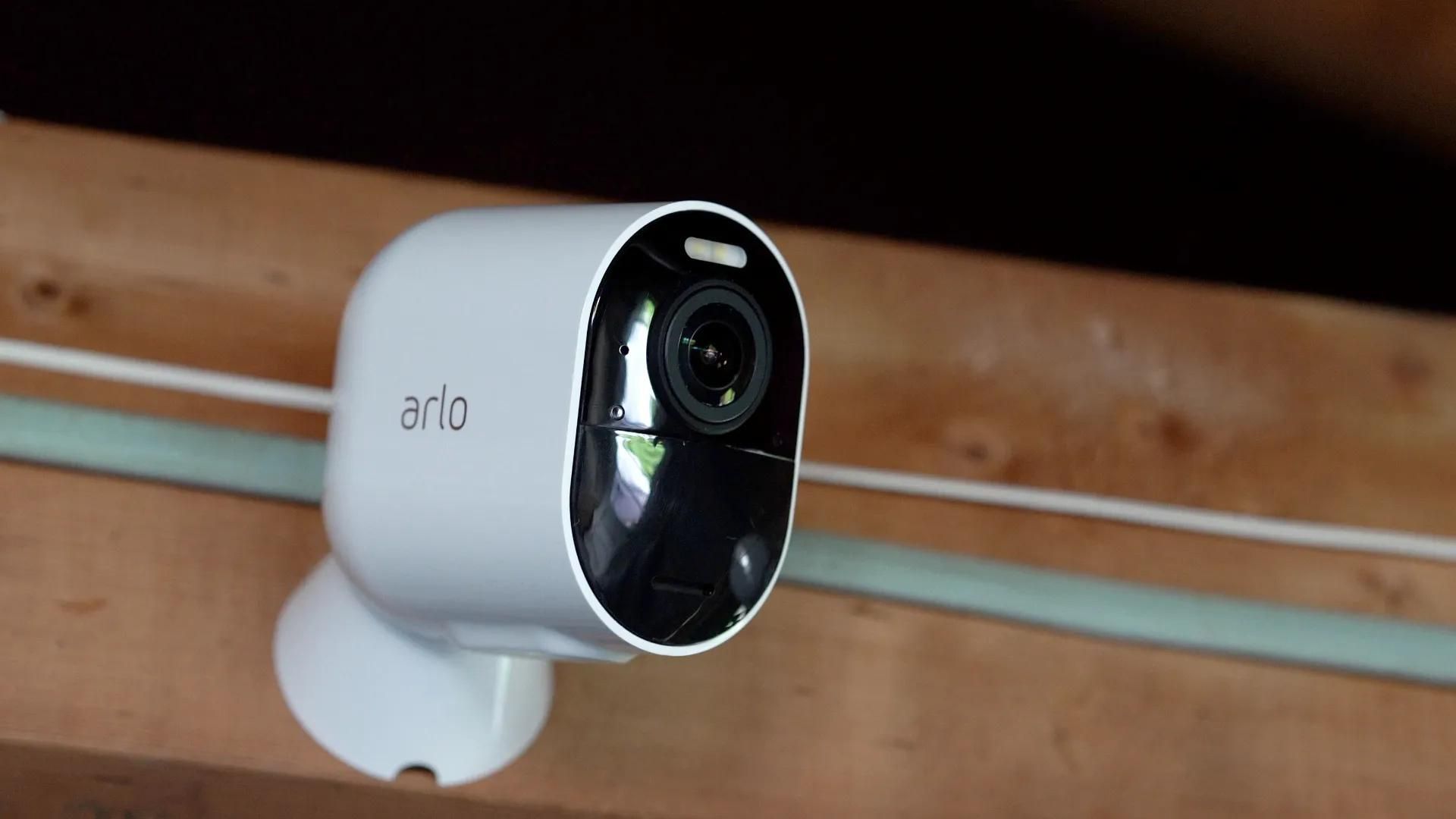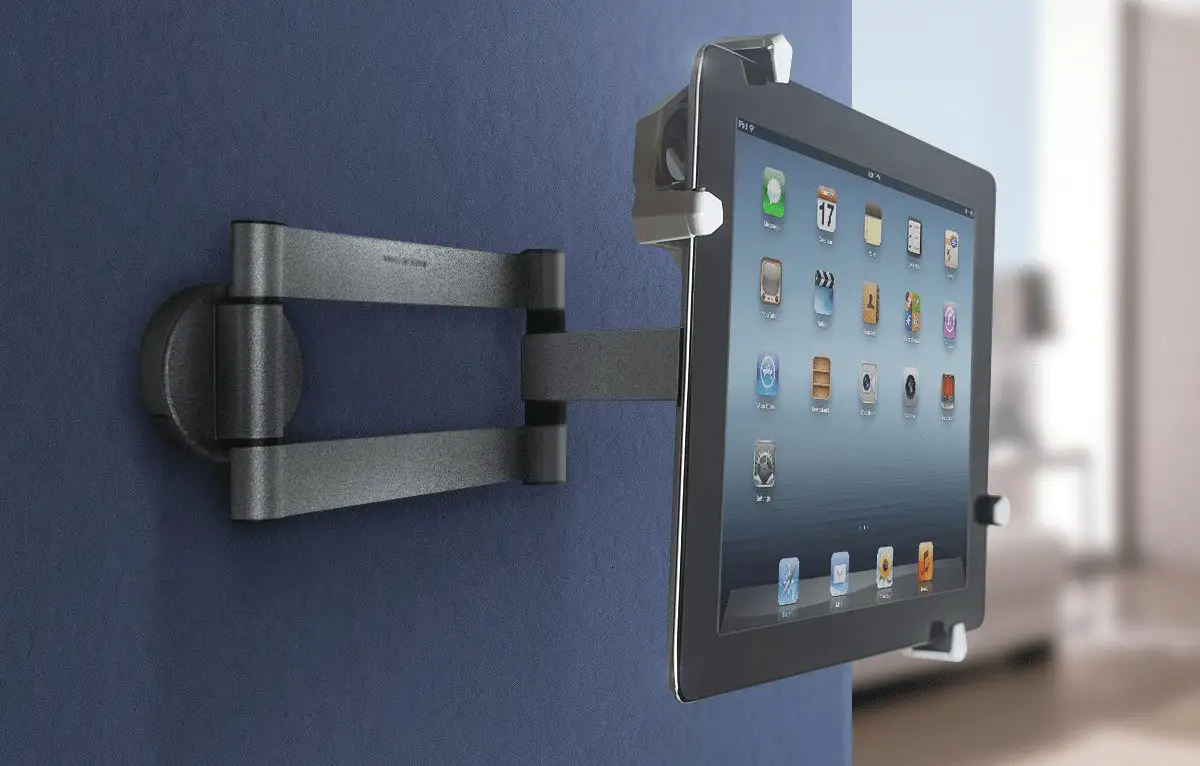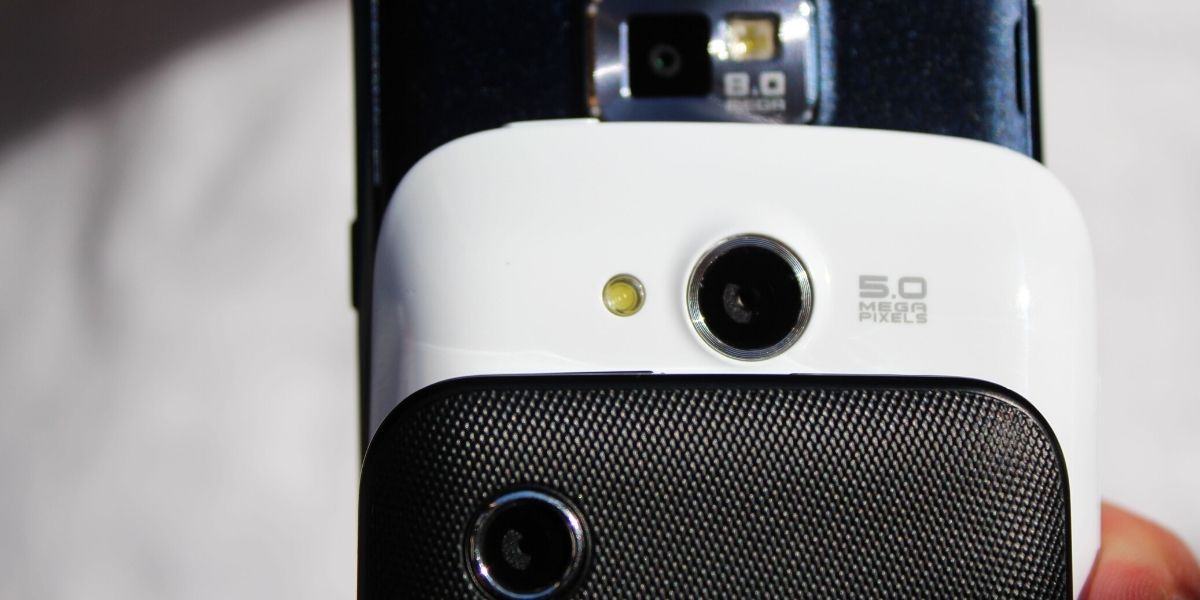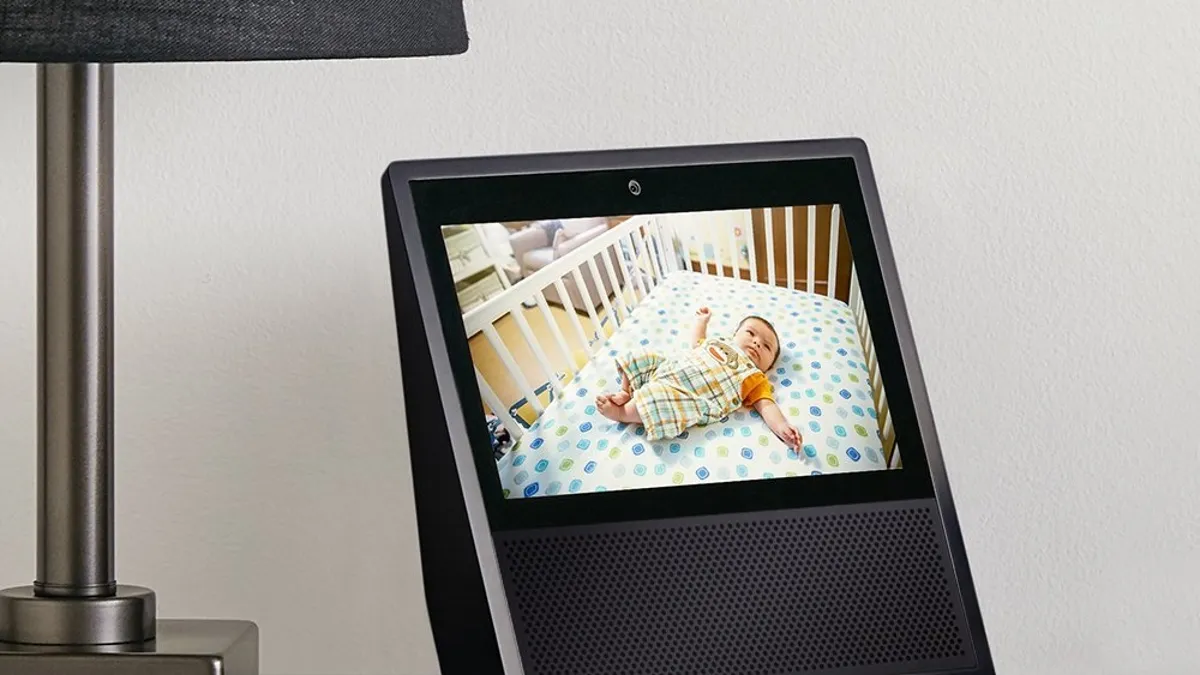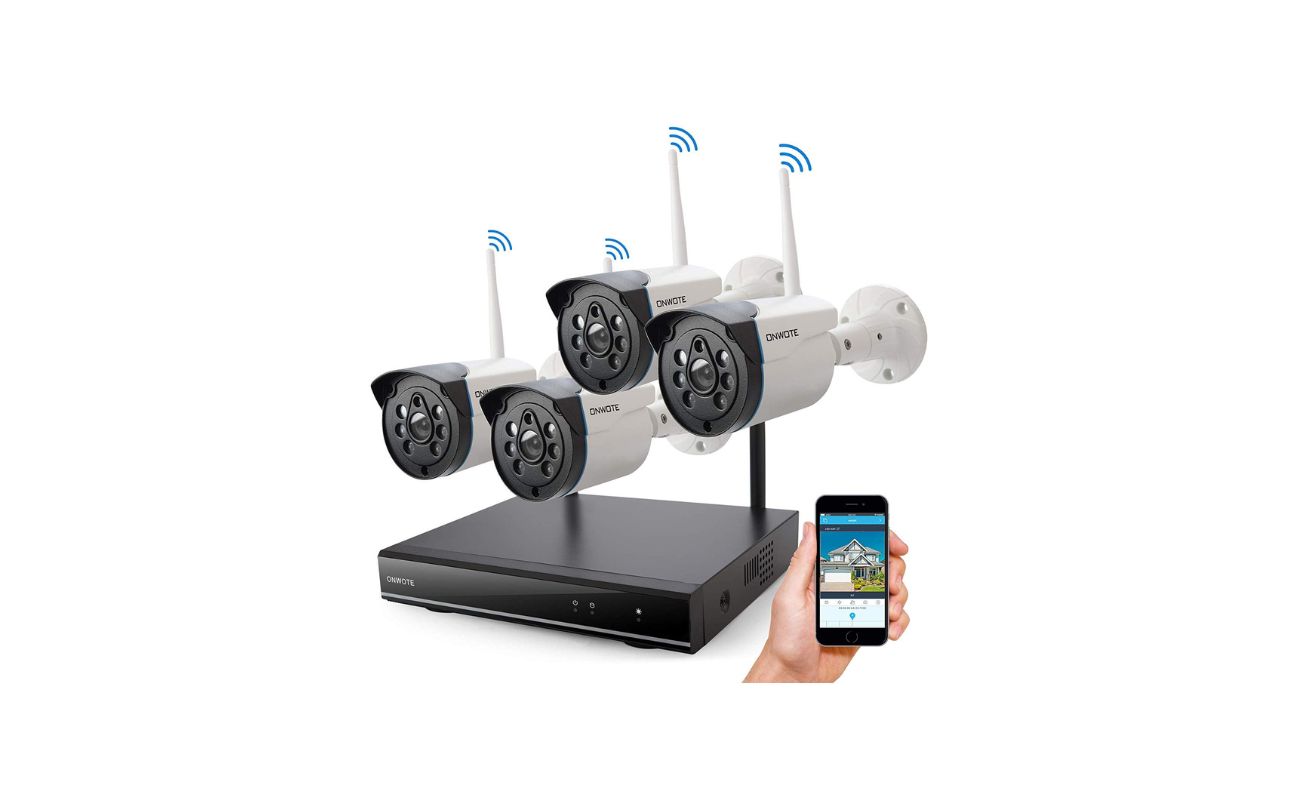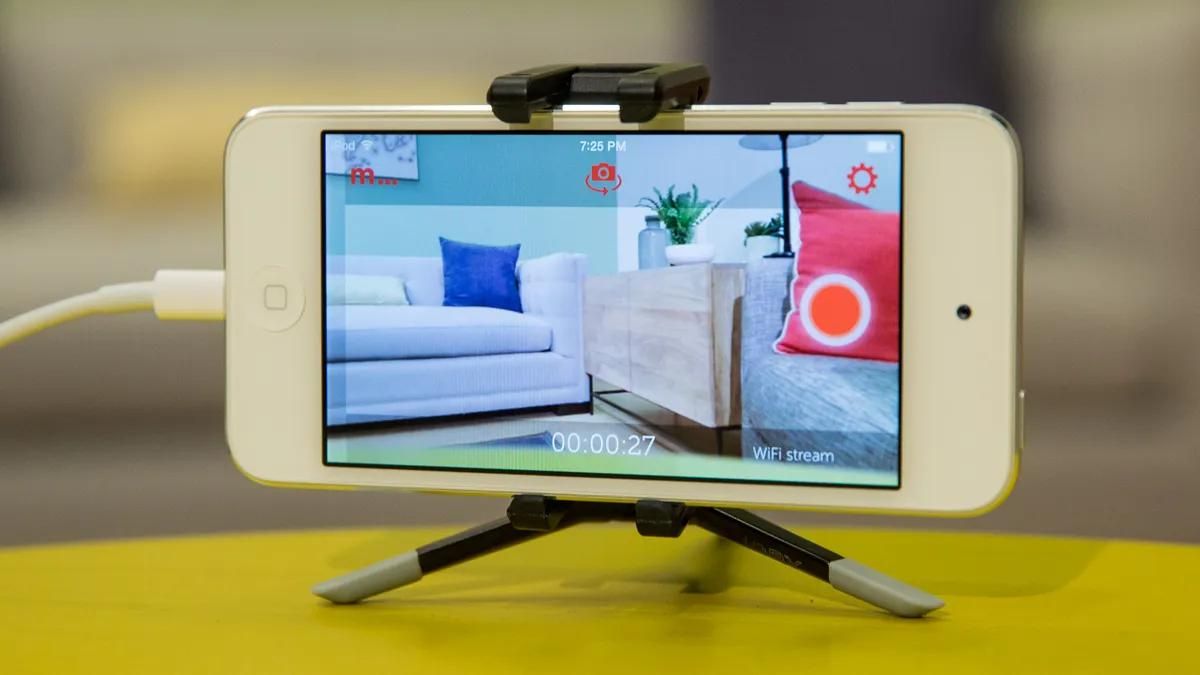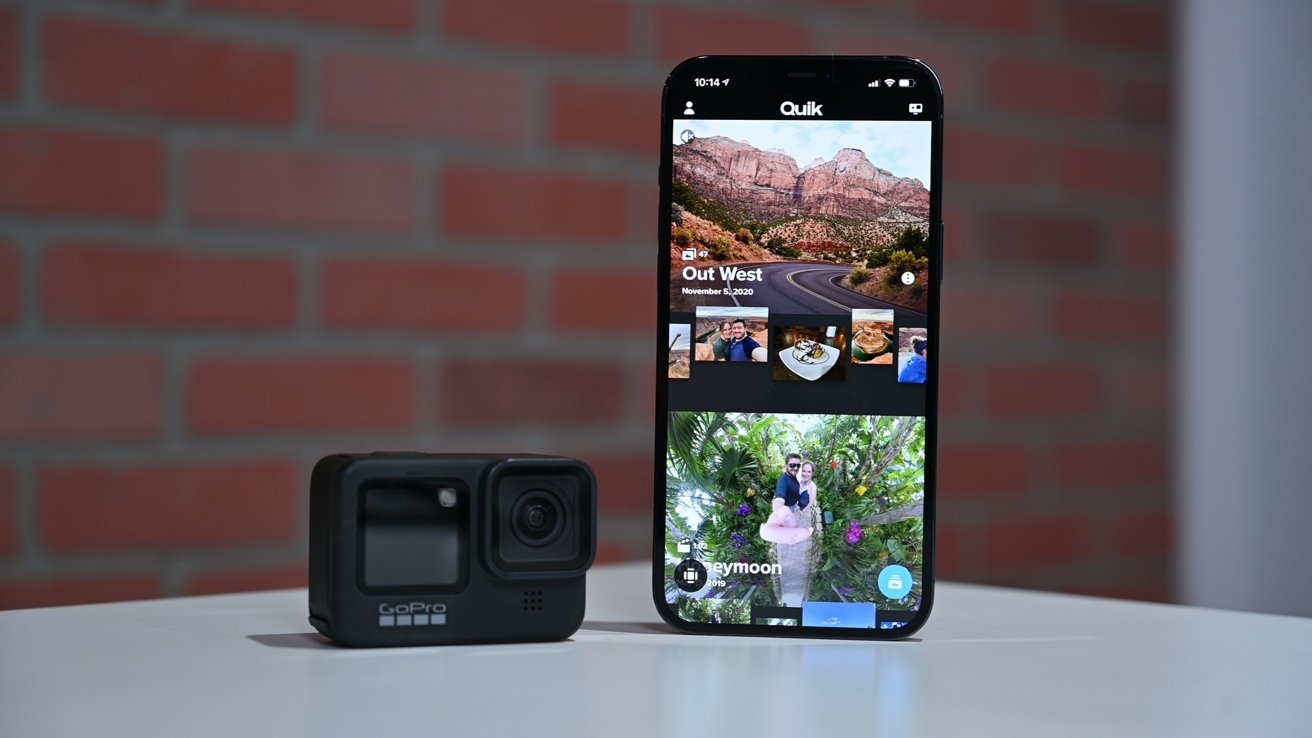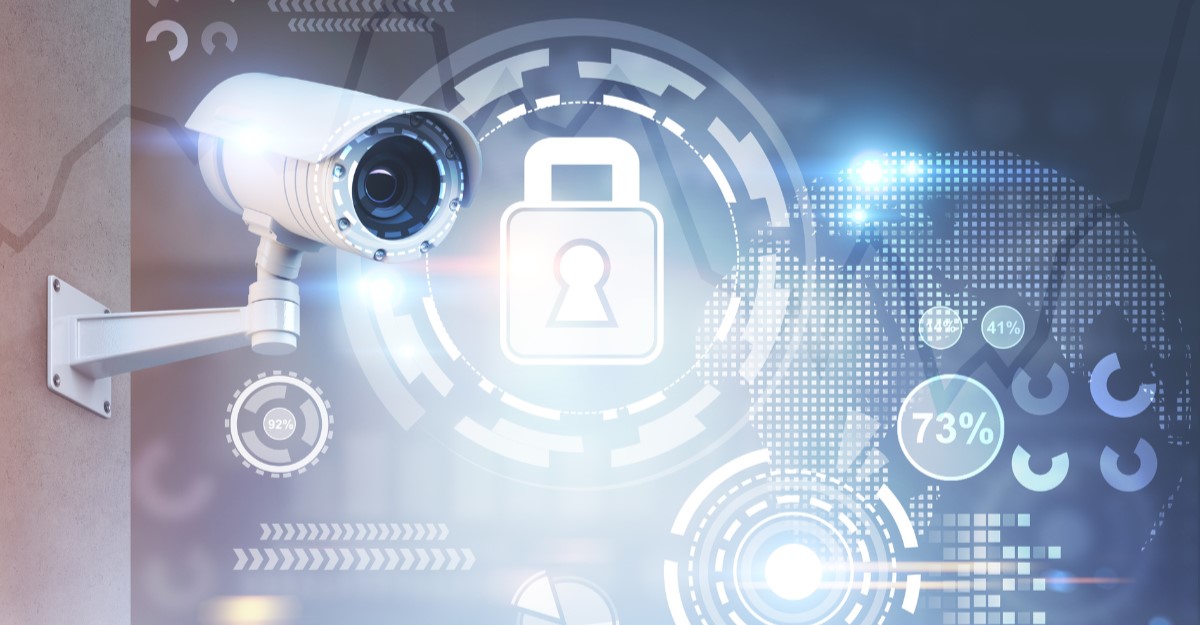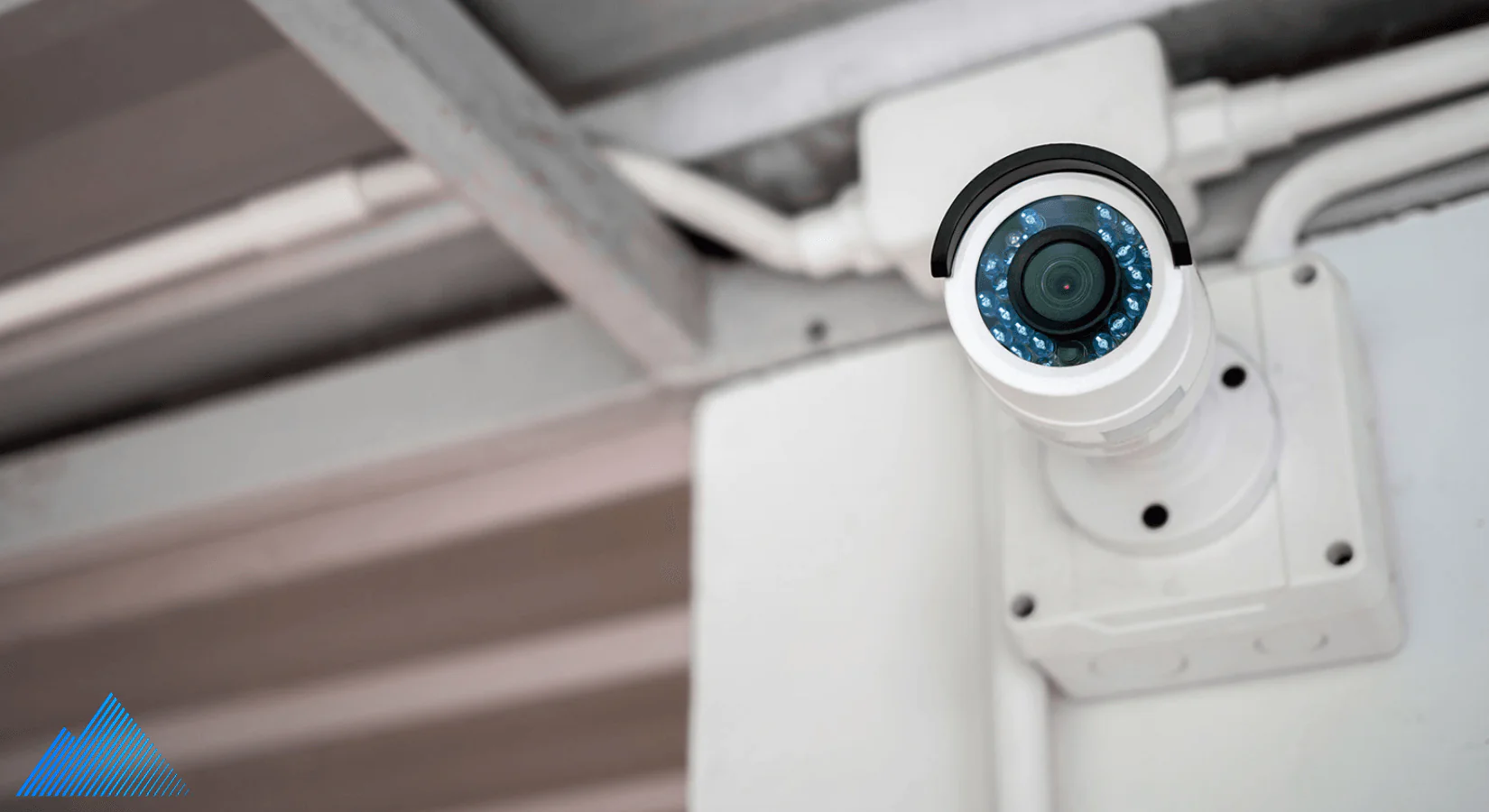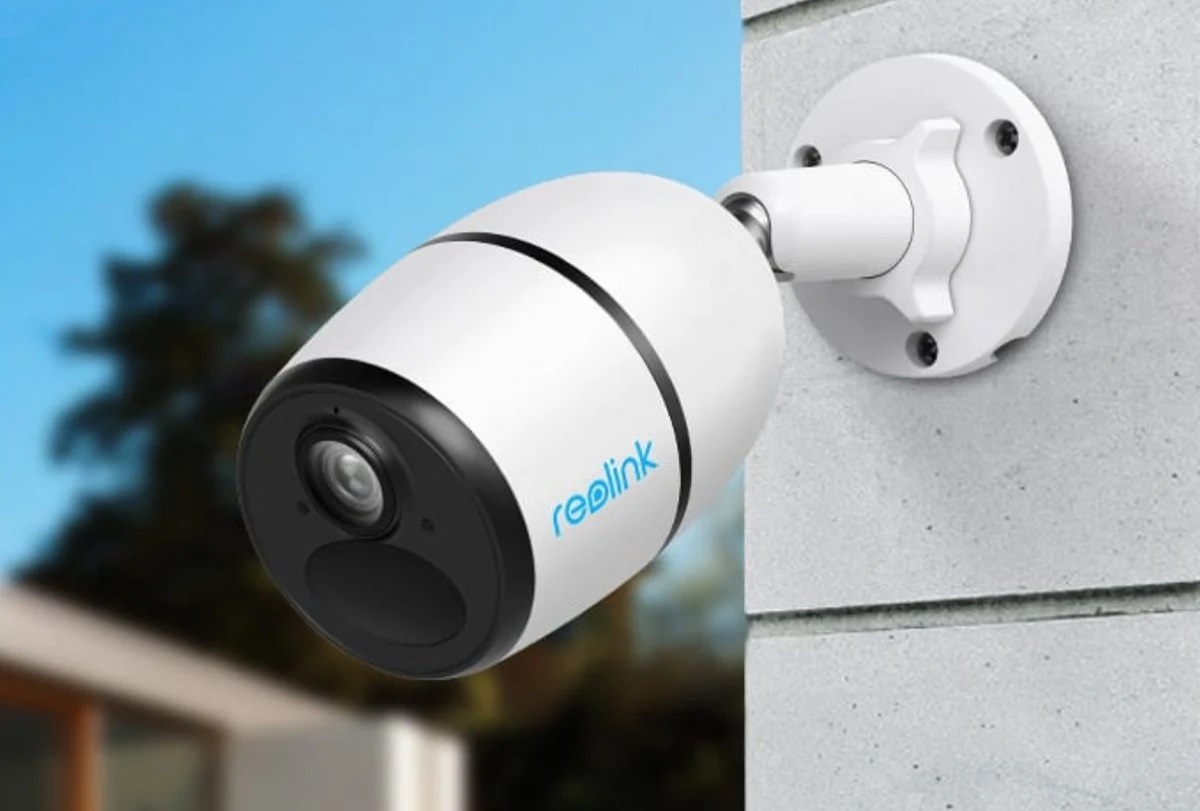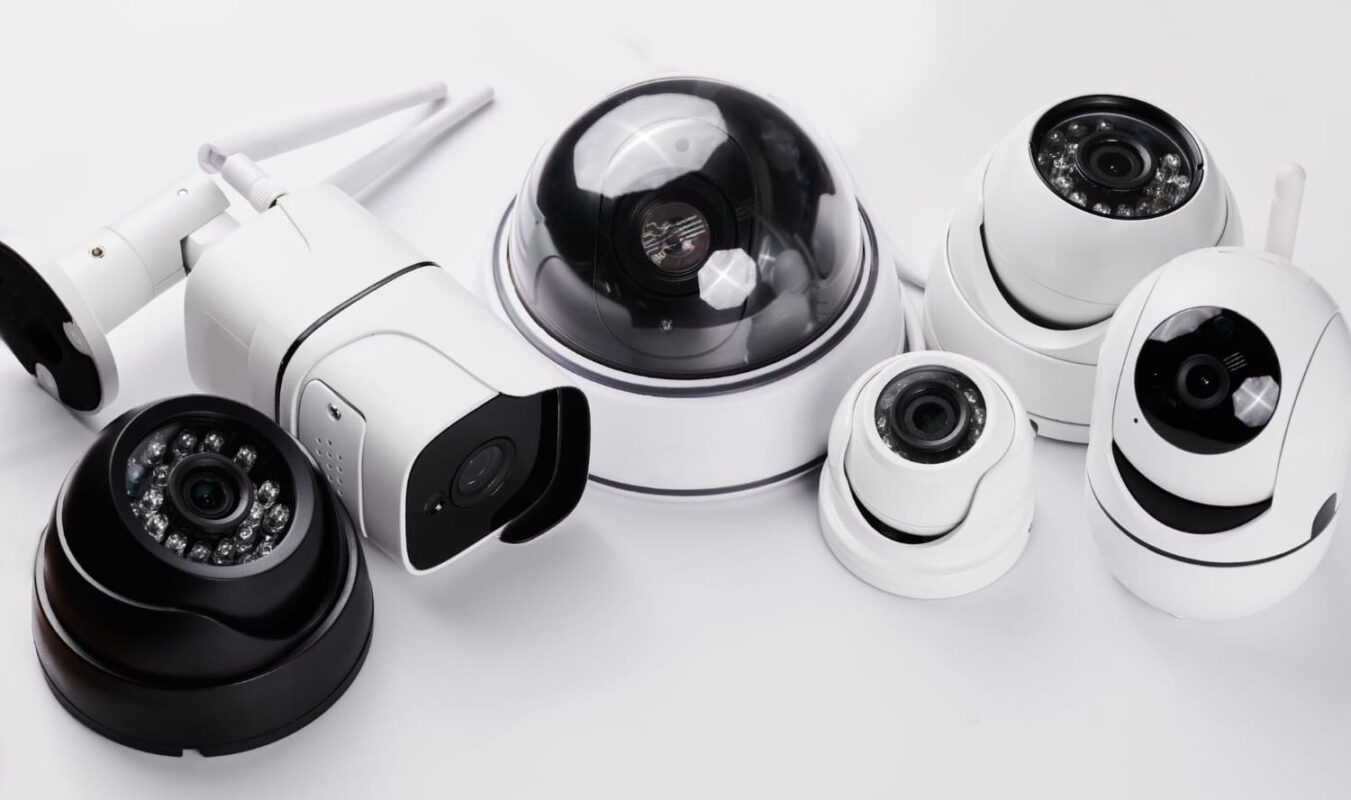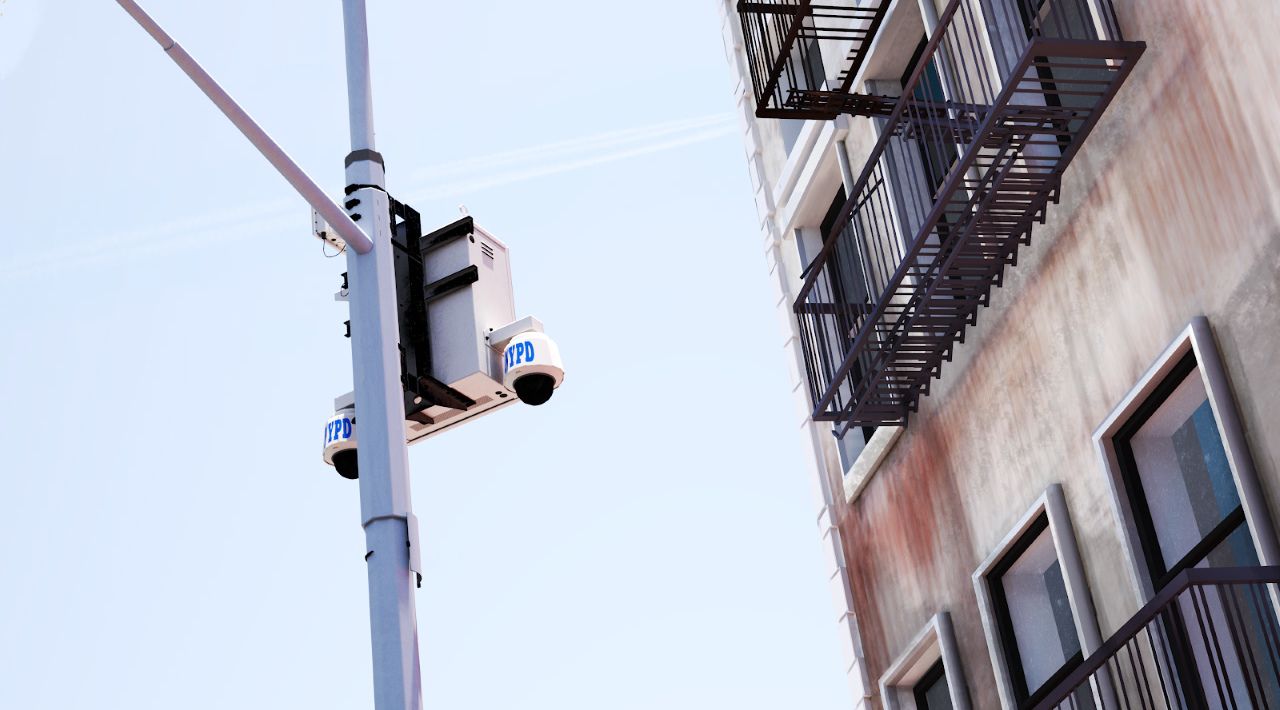Home>Home Security and Surveillance>How To Use A GoPro As A Security Camera
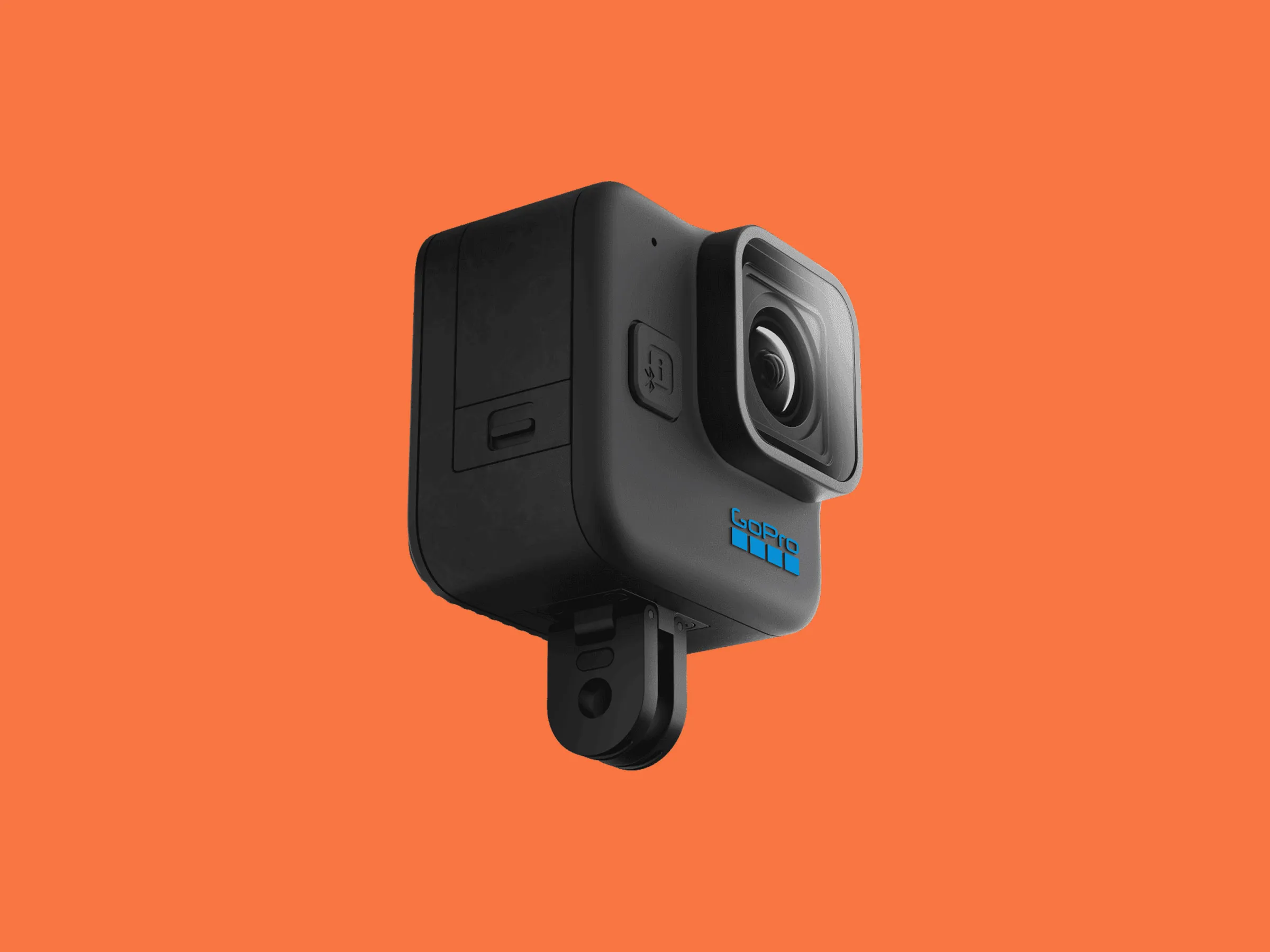

Home Security and Surveillance
How To Use A GoPro As A Security Camera
Modified: March 6, 2024
Learn how to repurpose your GoPro as a home security and surveillance camera with our step-by-step guide. Enhance your home security without breaking the bank.
(Many of the links in this article redirect to a specific reviewed product. Your purchase of these products through affiliate links helps to generate commission for Storables.com, at no extra cost. Learn more)
Introduction
Home security is a top priority for many homeowners, and with advancements in technology, there are now more options than ever to safeguard your property. One such option that has gained popularity is using a GoPro camera as a security camera. Known for their high-quality footage and durability, GoPro cameras are not only great for capturing thrilling outdoor adventures, but they can also be repurposed to enhance the security of your home.
In this article, we will guide you through the process of setting up and utilizing a GoPro as a security camera. Whether you already have a GoPro or are considering purchasing one, this comprehensive guide will provide you with the necessary steps to turn your device into a reliable surveillance tool.
Before we delve into the step-by-step process, it’s essential to understand the benefits of using a GoPro as a security camera. Firstly, GoPros are compact and portable, making them versatile for various mounting options. They can be easily placed in inconspicuous locations or moved around as needed. Additionally, GoPros are renowned for their high-resolution video quality, ensuring clear and detailed footage.
Moreover, GoPros offer a wide range of features and settings that can be customized to suit your specific security needs. From adjusting the field of view and frame rate to enabling motion detection and night vision capabilities, GoPros provide flexibility in tailoring the camera settings to optimize your home security.
Lastly, using a GoPro as a security camera is a more cost-effective option compared to purchasing traditional surveillance systems. Instead of investing in expensive cameras and complicated setup processes, repurposing a GoPro allows you to utilize the device you already own while still maintaining the effectiveness of a dedicated security camera.
Now that we understand the advantages, let’s dive into the step-by-step process of setting up and using a GoPro as a security camera. By following these instructions, you can enhance the security of your home and have peace of mind, knowing that your property is being monitored effectively. So, let’s get started with the first step: setting up your GoPro as a security camera.
Key Takeaways:
- Repurpose your GoPro for home security by following simple steps to set it up as a cost-effective and customizable surveillance tool. Enjoy peace of mind with high-quality footage and remote monitoring capabilities.
- Enhance your GoPro security camera setup by adjusting angles, reviewing footage, and implementing additional security measures. Regular maintenance ensures optimal performance for reliable home surveillance.
Read more: How To Record Using Security Camera
Step 1: Setting up your GoPro as a security camera
To begin using your GoPro as a security camera, you’ll first need to prepare the camera for surveillance purposes. Here are the steps to follow:
1. Update firmware: Before you start, ensure that your GoPro is running the latest firmware. Firmware updates often include important security enhancements and bug fixes that can improve the camera’s performance.
2. Reset camera settings: To ensure a clean slate for your security camera setup, reset your GoPro to its default settings. This can be done by accessing the camera’s settings menu and selecting the “Reset” or “Factory Reset” option. This will erase any previous configurations and ensure a fresh start.
3. Set the date and time: Accurate time stamping is crucial for security camera footage. Go to the camera settings and adjust the date and time settings to reflect the current time. This will help you accurately review and analyze the captured footage.
4. Adjust image stabilization: GoPros typically have built-in image stabilization features designed for action footage. However, for security monitoring, it’s recommended to turn off or reduce the image stabilization setting. This will prevent the camera from automatically adjusting its field of view when detecting motion, ensuring a consistent and stable frame.
5. Disable screen savers: To prolong battery life and eliminate any disturbances caused by screen savers, disable any screen saver settings on your GoPro. This will ensure that the camera remains active and ready for surveillance at all times.
6. Enable loop recording: Loop recording is a crucial feature for security cameras, as it allows continuous recording by overwriting old footage when the storage is full. Access the camera settings and enable the loop recording option, ensuring that important footage is not lost due to limited storage space.
7. Customize video resolution and frame rate: Depending on your specific monitoring needs, adjust the video resolution and frame rate settings on your GoPro. Higher resolutions and frame rates result in clearer and smoother footage but keep in mind that higher settings can consume more storage space and battery power. Find the balance that best suits your requirements.
By following these setup steps, you’ll ensure that your GoPro is ready for security monitoring. In the next step, we’ll discuss how to choose the right mounting location for your camera to capture optimal footage.
Step 2: Choosing the right mounting location
Now that you have prepared your GoPro for security camera use, it’s time to find the perfect mounting location. The placement of your camera is crucial in capturing optimal footage and effectively monitoring your property. Consider the following factors when selecting the mounting location:
1. Coverage area: Identify the areas of your property that require surveillance coverage. Popular choices include entrances, driveways, backyards, or any vulnerable spots that may be targeted by intruders. Ensure that the camera’s field of view can capture these areas effectively.
2. Accessibility: Choose a location that allows easy access to the camera for maintenance and adjustments. You may need to change batteries, switch storage cards, or make minor tweaks to the camera’s positioning. Accessibility will save you time and effort in the long run.
3. Concealment: To maximize the effectiveness of your security camera, consider concealing it to avoid tampering or theft. Tuck it away in discreet spots, such as behind plants, under eaves, or inside weatherproof housings. Blending the camera with its surroundings will make it less noticeable to potential intruders.
4. Weather resistance: Ensure that the chosen mounting location offers protection for the camera against harsh weather conditions. GoPros are designed to be versatile and durable, but it’s always a good practice to shield them from rain, snow, or extreme heat. If the location is exposed, consider using a weatherproof housing or enclosure.
5. Power source availability: Depending on your preference, you can choose between battery-powered or externally powered setups. If you opt for continuous monitoring, an external power source is recommended to avoid battery depletion. Ensure that the chosen location has access to a power outlet or consider using extension cords or solar-powered options.
6. Wi-Fi connectivity: If you plan to access the live feed remotely or store footage in the cloud, ensure that the chosen location has a reliable Wi-Fi connection. Weak or intermittent Wi-Fi signals may hinder the camera’s functionality and limit your ability to monitor your property remotely.
By considering these factors, you can identify the ideal mounting location for your GoPro security camera. Remember to test different positions and angles to determine the spot that provides maximum coverage and fits your specific security needs. In the next step, we’ll discuss the process of configuring GoPro settings for security monitoring.
Step 3: Configuring GoPro settings for security monitoring
Once you have chosen the perfect mounting location for your GoPro security camera, it’s time to configure the camera settings to optimize its performance for monitoring purposes. Here are the steps to configure your GoPro settings for security monitoring:
1. Field of view (FOV): Adjust the FOV setting based on the area you want to monitor. Wide-angle settings capture a larger area, while narrow settings focus on a specific spot. Consider the size and layout of the monitoring area to determine the most suitable FOV for your needs.
2. Frame rate and resolution: Select a frame rate and resolution that balances video quality and storage space. Higher resolutions and frame rates result in clearer footage but may consume more storage. Consider the available storage capacity and how much video footage you want to retain before overwriting.
3. Protune settings: Enable Protune mode to access advanced settings and have more control over exposure, color, and other parameters. This can help enhance the quality of your security footage and optimize it for various lighting conditions.
4. Night mode: If you plan to monitor in low-light or nighttime conditions, enable the Night mode feature. It adjusts the camera’s settings to capture better quality footage in challenging lighting situations. Test this mode beforehand to ensure that it meets your expectations.
5. Motion detection: Some GoPro models offer a motion detection feature that triggers recording when movement is detected within the camera’s field of view. Enable this mode if you want to conserve storage space by only capturing footage when there is activity in the monitored area.
6. Sound recording: Decide whether you want to enable sound recording along with the video footage. While audio can provide additional information during an event, it may also capture background noise that is not relevant to the security monitoring. Evaluate your specific needs and privacy considerations before enabling sound recording.
7. Wi-Fi connectivity: Set up and connect your GoPro to your Wi-Fi network to enable remote access and control. This will allow you to monitor the live feed, adjust camera settings, and download footage from your GoPro using a smartphone, tablet, or computer.
By configuring these settings, you can customize your GoPro for effective security monitoring. Experiment with different settings and perform test recordings to ensure that the camera captures high-quality footage that meets your requirements. In the next step, we’ll discuss how to connect your GoPro to a power source for continuous surveillance.
Step 4: Connecting your GoPro to a power source
To ensure continuous surveillance without worrying about battery life, connecting your GoPro to a reliable power source is essential. Here are the steps to connect your GoPro to a power source for uninterrupted monitoring:
1. External power options: Depending on your setup and the availability of power outlets near the mounting location, you have several options for connecting your GoPro to an external power source. One common method is to use an AC power adapter specifically designed for GoPro cameras. These adapters typically plug into a standard wall outlet and provide a steady power supply to your camera.
2. USB charging cables: Another popular option is to use USB charging cables connected to a power bank, computer, or other USB power sources. This allows you to easily extend the reach of your GoPro by using longer cables or portable power banks. Ensure that the power source is reliable and capable of providing a consistent power supply for continuous monitoring.
3. Battery elimination: If you prefer not to rely on batteries at all, you can explore battery elimination options for your GoPro. This involves using external power packs or voltage regulators to directly power the camera without using any batteries. Consult resources specific to your GoPro model and consider the pros and cons of this approach.
4. Considerations for outdoor monitoring: If you plan to use your GoPro as an outdoor security camera, ensure that the power source and cables are weatherproof or properly protected against the elements. Use weather-resistant housing or enclosures to safeguard the power connections and prevent water damage.
5. Test the power connection: After connecting your GoPro to the chosen power source, ensure that the camera powers on and remains operational. Leave it connected for an extended period of time to confirm that it can sustain continuous monitoring without interruptions.
Remember to regularly check the power connection to ensure that it remains secure and functioning. Power outages or cable disconnections can disrupt surveillance, so periodic inspections are necessary.
By connecting your GoPro to a power source, you can eliminate concerns about battery life and maintain uninterrupted security monitoring. In the next step, we’ll discuss how to access the live feed from your GoPro and monitor your security camera.
Make sure to set up your GoPro in a secure location with a clear view of the area you want to monitor. Use the GoPro app to check the live feed and adjust settings as needed. Keep the camera charged and have enough storage space for recording.
Read more: How To Use Laptop As A Security Camera
Step 5: Accessing the live feed and monitoring your security camera
Once your GoPro security camera is set up and powered on, it’s time to access the live feed and start monitoring your property. Here are the steps to access the live feed and monitor your GoPro:
1. Connect to your GoPro’s Wi-Fi: Ensure that your smartphone, tablet, or computer is connected to the same Wi-Fi network as your GoPro. This will allow you to establish a connection between your device and the camera.
2. Download the GoPro app: Install the official GoPro app on your mobile device or use the GoPro software on your computer. The app provides a user-friendly interface to control your GoPro, access the live feed, change settings, and download captured footage.
3. Pair your GoPro with the app: Open the GoPro app and follow the instructions to pair it with your GoPro camera. This typically involves entering a code or selecting the appropriate camera from the app’s interface. Once paired, you’ll have full control over your GoPro’s settings and live feed.
4. Access the live feed: With your GoPro and app paired, navigate to the live view section within the app. You should now be able to see the live feed streaming from your GoPro camera. Take a moment to ensure that the camera is capturing the desired area and that the positioning is correct.
5. Monitor and adjust settings: From the app, you can monitor the live feed in real-time and adjust camera settings as needed. This allows you to customize the camera’s field of view, switch between different shooting modes, toggle on or off motion detection, and control other camera features remotely.
6. Remote monitoring capabilities: Take advantage of the remote monitoring capabilities offered by the GoPro app. You can access the live feed and review footage from anywhere with an internet connection, providing you with peace of mind and the ability to check on your property at any time.
7. Enable alerts and notifications: Some GoPro models or third-party apps offer the ability to receive alerts or notifications when motion is detected in the camera’s field of view. Explore these features and set up notifications to receive immediate updates when activity is detected around your property.
With the live feed accessible and the ability to monitor and adjust settings, you can now utilize your GoPro as a fully functional security camera. In the next step, we’ll discuss how to optimize camera angles and settings for optimal security footage.
Step 6: Adjusting camera angles and settings for optimal security footage
To ensure that your GoPro security camera captures optimal footage for security monitoring, it’s essential to adjust the camera angles and settings. Here are the steps to adjust your camera angles and settings for optimal security footage:
1. Fine-tune camera positioning: Evaluate the camera’s field of view and adjust the positioning as needed. Aim to capture the desired areas with the appropriate angles and coverage. Consider the height, tilt, and rotation of the camera to maximize its effectiveness in monitoring specific areas of your property.
2. Avoid obstructions: Check for any objects, plants, or structures that may obstruct the camera’s view. Ensure that there are no obstacles blocking the line of sight to the areas you want to monitor. Periodically review camera positioning to ensure that no obstructions have appeared over time due to growth or changes in the surroundings.
3. Test different angles: Experiment with different camera angles to find the optimal position for capturing the desired footage. Try positioning the camera higher or lower, tilting it slightly, or changing the direction it faces to capture a broader or more specific area. Test and adjust until the camera is capturing the footage you need.
4. Consider multiple cameras: Depending on the size and layout of your property, consider using multiple GoPro cameras for comprehensive coverage. Strategically placing multiple cameras can eliminate blind spots and provide a complete view of your property. Ensure that the cameras have overlapping coverage and work together seamlessly.
5. Lighting optimization: Assess the lighting conditions in the monitored areas and adjust your GoPro settings accordingly. If the area is too bright or too dark, adjust the exposure settings or enable Night mode, if available, to achieve the best visibility in different lighting situations. Regularly monitor the footage and make adjustments as necessary.
6. Regular maintenance: Perform regular maintenance checks on your GoPro, including cleaning the lens, verifying the power connection, and ensuring that the camera is functioning properly. Clear any dust, dirt, or debris that may affect the image quality. Regular maintenance will ensure that your GoPro continues to capture high-quality footage.
By carefully adjusting camera angles and settings, you can optimize your GoPro security camera to capture optimal footage for monitoring your property. Regularly review the captured footage to identify any areas that may need further adjustment. In the next step, we’ll discuss how to review and store security footage from your GoPro.
Step 7: Reviewing and storing security footage from your GoPro
After your GoPro security camera has been monitoring your property, it’s crucial to review and store the captured footage for future reference. Here are the steps to review and store security footage from your GoPro:
1. Offload footage: Connect your GoPro to your computer using a USB cable or remove the SD card and insert it into a card reader. Offload the recorded footage to your computer for easy access and storage. Create a dedicated folder for organizing the footage to maintain a systematic approach.
2. Review and analyze: Open the video files on your computer and review the footage captured by your GoPro. Scan through the recordings to ensure that the camera is capturing the desired areas and that the image quality meets your expectations. Look for any unusual activities or incidents that may require further investigation.
3. Trim and save important clips: If you come across specific moments or incidents of interest within the recorded footage, trim and save those clips separately. This will allow you to quickly access and share the relevant content without having to sift through lengthy recordings.
4. Backup storage: Implement a backup system for your security footage to prevent data loss. Consider using external hard drives, cloud storage services, or network-attached storage (NAS) devices to create duplicate copies of the recorded footage. Regularly back up your data to ensure its safety and availability in case of any hardware failures or accidents.
5. File organization: Organize your security footage files in a logical manner for easy retrieval. Use a naming convention that includes the date, time, and location of the recorded footage to help identify and locate specific events quickly. Create subfolders or tags to categorize the footage based on different areas or incidents.
6. Retention policy: Determine a retention policy for your security footage based on your needs and available storage space. Decide how long you want to keep the recorded footage before deleting or overwriting it. This will help you manage storage resources effectively and ensure that you have access to past recordings when needed.
7. Regular monitoring and maintenance: Continuously monitor the functionality of your GoPro security camera to ensure that it captures footage as intended. Regularly check the camera’s status, power connection, and memory card capacity to prevent any disruptions in the surveillance process. Monitor for any issues such as corrupted files or camera malfunctions and address them promptly.
By reviewing and storing your security footage effectively, you can maintain a reliable record of events and incidents for future reference. This footage can be valuable for analyzing patterns, identifying suspects, or providing evidence in case of any unfortunate incidents. In the next step, we’ll provide some additional tips for using a GoPro as a security camera.
Step 8: Additional tips for using a GoPro as a security camera
While you now have a good understanding of how to set up, configure, and use a GoPro as a security camera, here are some additional tips to further enhance your experience:
1. Use a memory card with sufficient storage capacity: Invest in a high-capacity memory card to ensure that you have ample space to store your security footage. Consider using SD cards with Class 10 or UHS-I/UHS-II ratings for optimal performance and faster transfer speeds.
2. Secure your GoPro camera: To prevent unauthorized access or theft of your GoPro, consider using security measures such as password protection or employing physical security devices like locks or cages. Protecting your camera adds an extra layer of security to your surveillance setup.
3. Regularly test your camera: Perform routine checks on your GoPro to ensure that it is functioning correctly and capturing footage effectively. Test the camera’s connectivity, settings, and power source to prevent any surprises or issues when you rely on it for security purposes.
4. Utilize motion detection features: If your GoPro model includes motion detection capabilities, take advantage of this feature to conserve storage space and capture footage only when there is activity. Configure the sensitivity levels for optimal performance and reduce false alerts.
5. Set up remote access: Enable remote access to your GoPro security camera through the GoPro app or other compatible software. This allows you to monitor your property from anywhere and provides a greater sense of security and peace of mind.
6. Regularly update firmware: Stay up to date with the latest firmware releases for your GoPro camera. Firmware updates often include important security enhancements, bug fixes, and new features that can improve the stability and functionality of your camera.
7. Install outdoor housing: If you plan to use your GoPro as an outdoor security camera, consider investing in a weatherproof housing or enclosure. This provides additional protection against the elements and ensures that your camera remains operational even in challenging weather conditions.
8. Consider professional monitoring services: If you require continuous and professional monitoring of your property, consider subscribing to a third-party security service that can remotely monitor your GoPro camera and provide alerts and assistance in case of any security incidents.
Remember, while using a GoPro as a security camera can be an effective and cost-efficient solution, it’s important to assess your specific security needs and adapt the setup accordingly. Regularly review and update your security measures to ensure that your GoPro remains a reliable tool for protecting your home and assets.
By following these additional tips, you can enhance the performance and effectiveness of your GoPro security camera setup. Stay vigilant and proactive in maintaining your surveillance system to ensure the safety and security of your property.
Read more: How To Use IPhone As A Security Camera
Conclusion
In conclusion, using a GoPro as a security camera offers a convenient and cost-effective solution for monitoring your home or property. By following the steps outlined in this guide, you can successfully set up and configure your GoPro to function as a reliable surveillance tool.
Through proper positioning, adjusting camera settings, and utilizing the features and capabilities of your GoPro, you can capture high-quality footage that helps enhance the security of your property. The ability to access the live feed remotely, review recorded footage, and receive motion detection alerts provides peace of mind and valuable information to respond to security incidents effectively.
Remember to regularly maintain and monitor your GoPro security camera to ensure its optimal performance. Check connections, update firmware, and review the footage to address any issues and make necessary adjustments.
While a GoPro as a security camera offers many advantages, it’s important to note its limitations. GoPros are primarily designed for outdoor adventure and action sports, thus they may not have all the features and capabilities of a dedicated surveillance camera. Consider your specific security needs and assess if a GoPro meets your requirements.
Incorporating additional security measures like password protection, physical security devices, and professional monitoring services can further enhance the effectiveness of your GoPro security camera setup.
Ultimately, using a GoPro as a security camera allows you to repurpose a versatile and high-quality device, providing an affordable and customizable solution for safeguarding your property. With the right setup, proper positioning, and regular maintenance, you can have greater peace of mind knowing that your home is under reliable surveillance.
Whether you already own a GoPro or are considering purchasing one, with the information provided in this guide, you are equipped to turn your device into a valuable security tool. Enjoy the benefits of using a GoPro as a security camera and the reassurance it brings to your home security and monitoring needs.
Frequently Asked Questions about How To Use A GoPro As A Security Camera
Was this page helpful?
At Storables.com, we guarantee accurate and reliable information. Our content, validated by Expert Board Contributors, is crafted following stringent Editorial Policies. We're committed to providing you with well-researched, expert-backed insights for all your informational needs.
